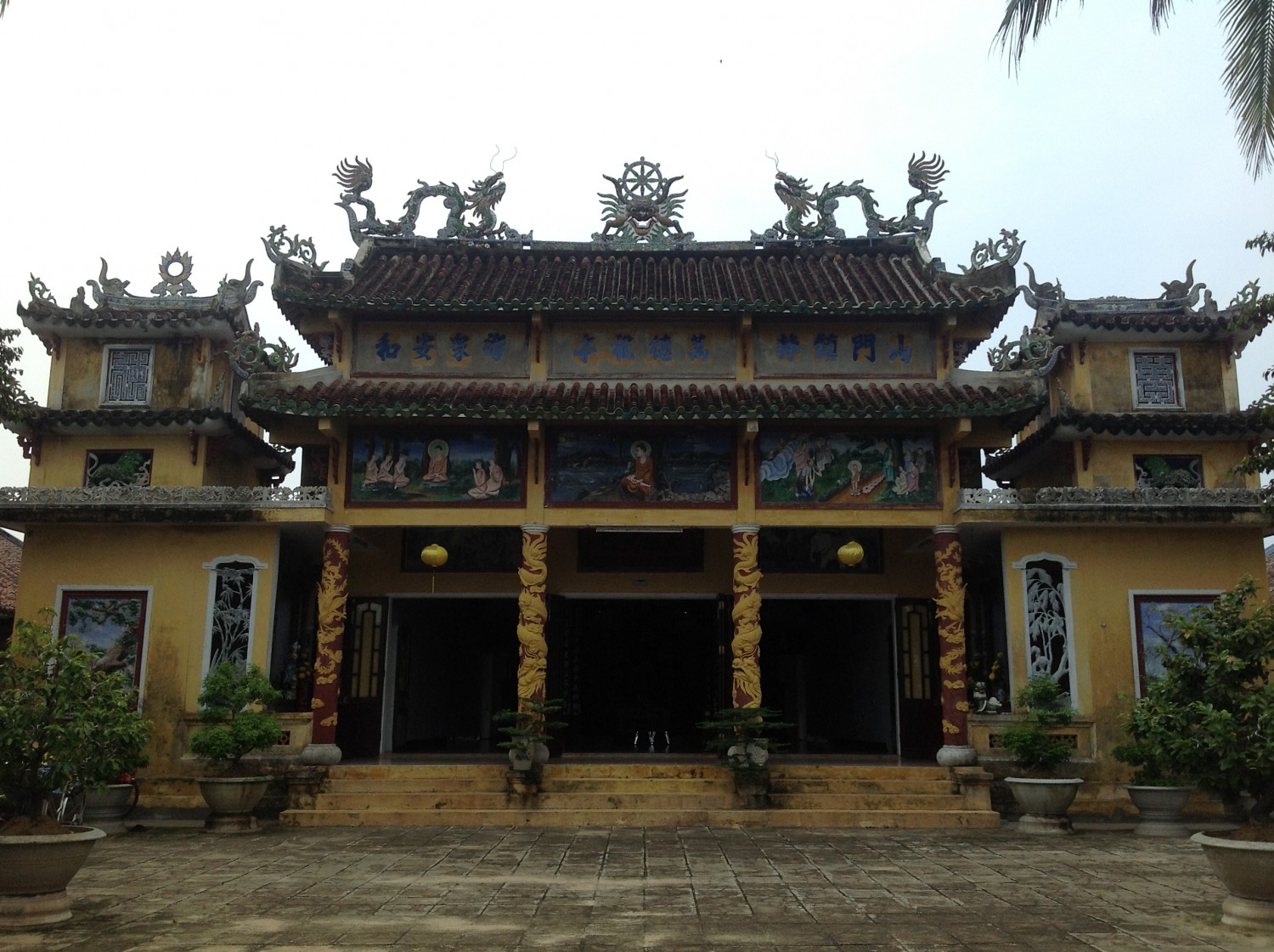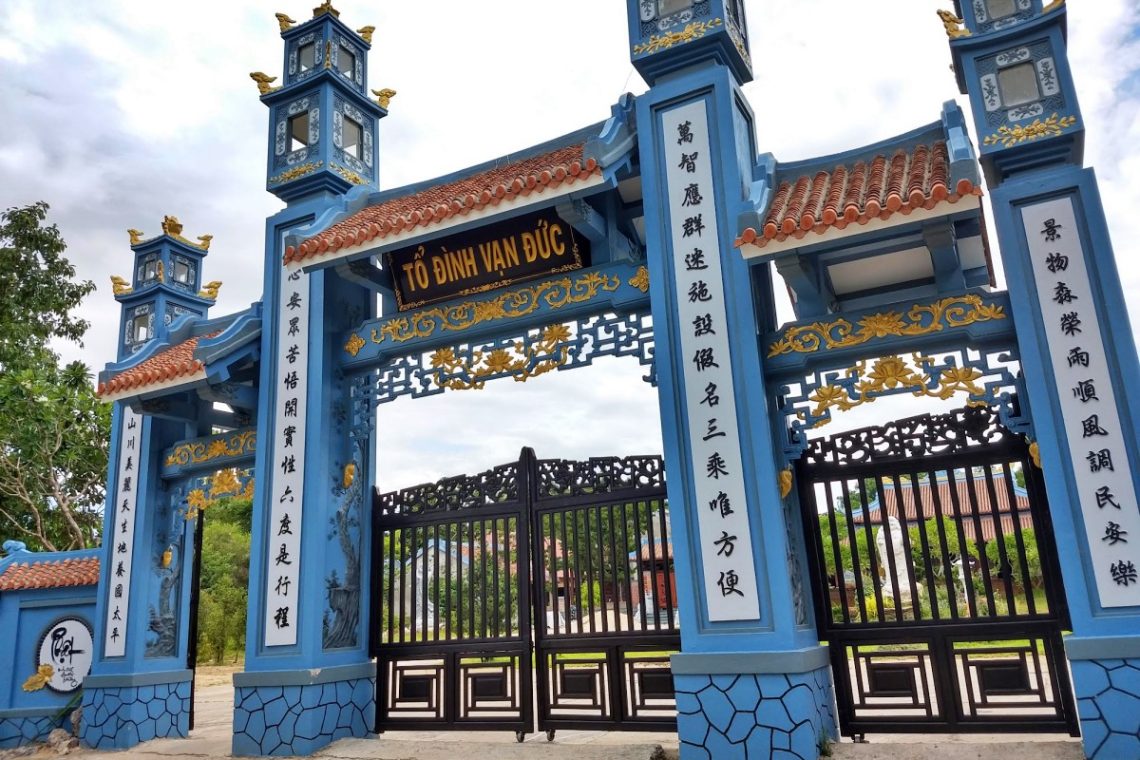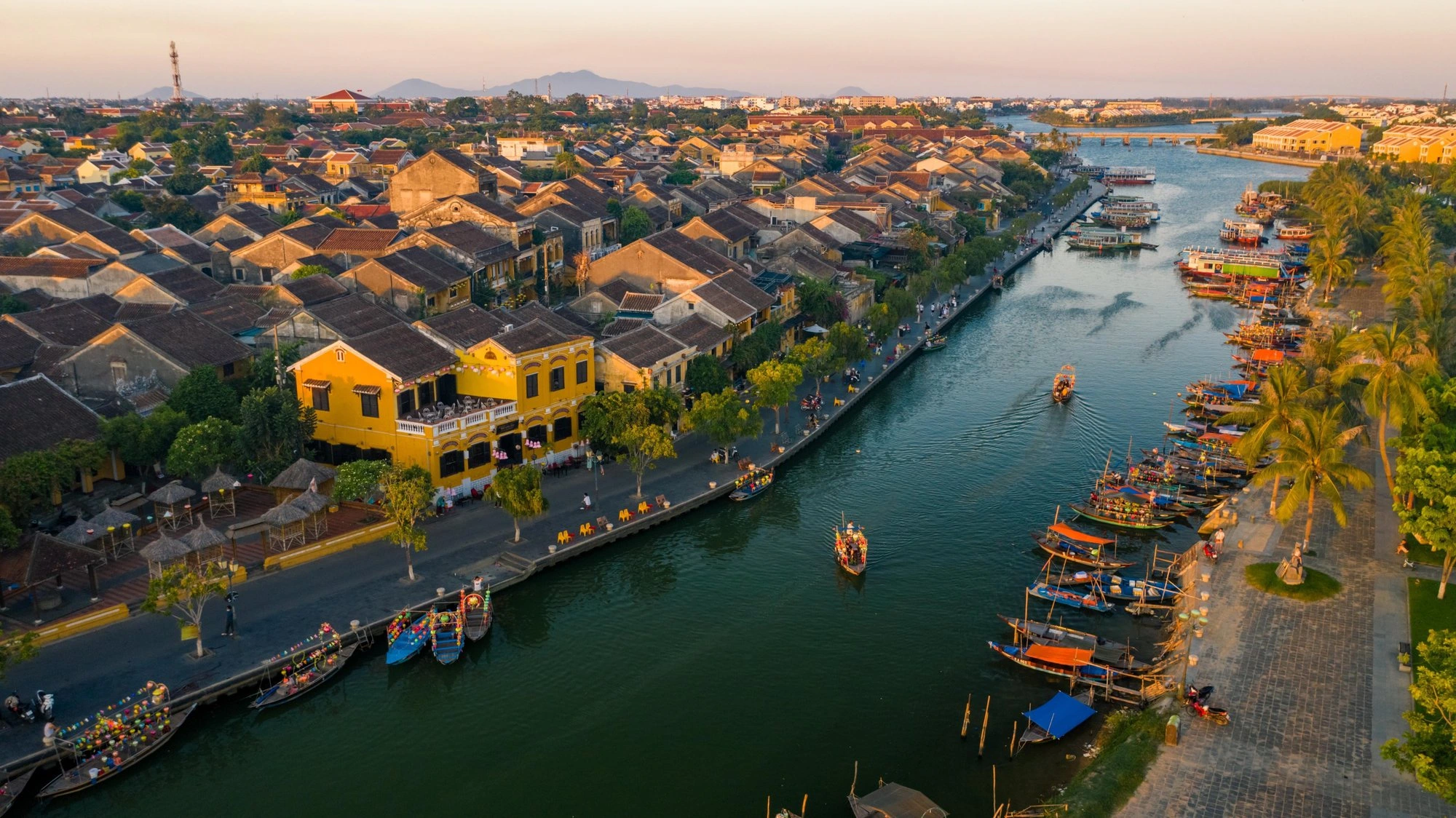1. Overview of Van Duc Pagoda
Address: 2B Village, Cam Ha Commune, Hoi An City, Quang Nam Province Opening hours: 8 AM – 7 PM (Everyday) Van Duc Pagoda (meaning “Ten Thousand Virtues”) is one of Hoi An’s largest and oldest Buddhist temples. Built in the late 17th century by Zen master Minh Luong, it has served as a center for meditation and Buddhist teachings. Here, many of his disciples have greatly contributed to Quang Nam Buddhism, including Buddha Tuyet-Tuong Quang, Buddha Hien-Hoa Nghiem, and Buddha Tuong-Duc Lien.
Van Duc Pagoda (meaning “Ten Thousand Virtues”) is one of Hoi An’s largest and oldest Buddhist temples. Built in the late 17th century by Zen master Minh Luong, it has served as a center for meditation and Buddhist teachings. Here, many of his disciples have greatly contributed to Quang Nam Buddhism, including Buddha Tuyet-Tuong Quang, Buddha Hien-Hoa Nghiem, and Buddha Tuong-Duc Lien.
Today, the pagoda is still active, with monks and visitors coming to pray, meditate, and learn about Buddhist traditions. With over 33 generations of monks taking care of the temple and four restorations, Van Duc Pagoda has remained a special place for Buddhism in Vietnam.
2. Highlights of Van Duc Pagoda
2.1. The unique architecture of Van Duc Pagoda
Van Duc Pagoda is a fine example of a traditional East Asian architectural style, particularly influenced by Hoi An’s ancient town aesthetics. The temple is beautifully situated on the right bank of the De Vong River, covering an area of approximately 6 hectares. The serene landscape is surrounded by willow trees, fruit trees, and tranquil gardens, making it a perfect place for meditation and relaxation.
The pagoda features a U-shaped layout with interconnected sections, a three-door temple gate, and curved tiled roofs with complex details of dragons, lions, turtles, and phoenixes. Inside, the pagoda is divided into different sections, each dedicated to different Buddhist teachings and deities. The wooden pillars and painted walls showcase traditional Vietnamese craftsmanship.
2.2. Valuable artifacts inside Van Duc Pagoda
Most notably, Van Duc Pagoda houses 115 wooden printing blocks with ancient Buddhist texts, some even dating back to the Le Dynasty in 1482. The pagoda is also the house to 22 Buddhist statues of Amitabha, Shakyamuni, and Maitreya Buddhas; a large bronze bell of 1.2 meters tall with dragon-shaped handles, and 4 intricate dragon and phoenix carvings on wood and stones. Additionally, a collection of Ming and Qing dynasty ceramics, including plates, cups, incense burners, and vases, is included in the pagoda’s values. These items make Van Duc Pagoda an important place for Buddhist culture and history.3. Cultural significance of Van Duc Pagoda
 Van Duc Pagoda is where locals pray to Buddhist deities, especially Amitabha Buddha, Dia Tang Bodhisattva, and Avalokitecvara. Visitors came here looking to pay their respects, get fortunes told, or simply marvel at the well-preserved architecture. As a center for Buddhist practice, it also hosts significant annual festivals such as Buddha’s Birthday and Avalokiteshvara Bodhisattva’s Day.
Van Duc Pagoda is where locals pray to Buddhist deities, especially Amitabha Buddha, Dia Tang Bodhisattva, and Avalokitecvara. Visitors came here looking to pay their respects, get fortunes told, or simply marvel at the well-preserved architecture. As a center for Buddhist practice, it also hosts significant annual festivals such as Buddha’s Birthday and Avalokiteshvara Bodhisattva’s Day.
On these special occasions, the temple is filled with people, and the monks organize prayers, Hoi An lantern ceremonies, and charity events. Hundreds of paper lanterns are released into the river, creating a breathtaking scene at night.
>>>> Check out other iconic Vietnamese temples here!
4. Travel guide to Van Duc Pagoda in Hoi An
4.1. How to get to Van Duc Pagoda

You can easily reach the pagoda from different parts of Hoi An:
- From Bang An Beach: If you are traveling north to the beach on Hai Ba Trung, just before the last bridge, you will see the islet with Tra Que Vegetable Village. Head west from the village for 1.8 kilometers.
- From Hoi An Stadium: Travel 1.8 kilometers west on Le Hong Phong Street, then take a dirt road for 2 kilometers.
- From Hoi An Ancient Town: To reach Van Duc Pagoda from Hoi An Ancient Town, drive about 5 km. Start on Nguyen Phuc Tan Street, go straight to Cao Hong Lanh Street, and then turn onto Hung Vuong Street. Continue to Nguyen Tat Thanh Street (DT607), then take Huynh Thuc Khang Street. Follow Trang Keo 1 Street, then turn onto Cam Ha Street.
Most travelers rent a motorbike or take a taxi to get to the pagoda. If you prefer a slower pace, biking is a great option, as you can enjoy the peaceful countryside scenery along the way.
>>>> Check out the Hoi An Map for a shameless Hoi An Adventure!
4.2. When to visit
The best time to visit Van Duc Pagoda is in the evening on full moons of each month. You should also visit major Buddhist sacrificial holidays such as Buddha’s Birthday (April 15); Vu Lan announces filial piety (July 15); and the Buddha attained enlightenment (December 12). These occasions feature vibrant rituals and lantern releases, offering a unique cultural experience.4.3. Travel tips
- Dress appropriately: Wear modest clothing (that covers your shoulders and knees) as a sign of respect to the visitors. Remove your shoes before entering every sacred area.
- Be quiet: Speak softly and avoid making loud noises. Feel free to take out your camera or phone, but be mindful of surrounding visitors as well.
- Transportation: Travel by bike is advised, as you can also enjoy the view of the river. You can also call for taxis or ride-hailing services for more convenient options.
